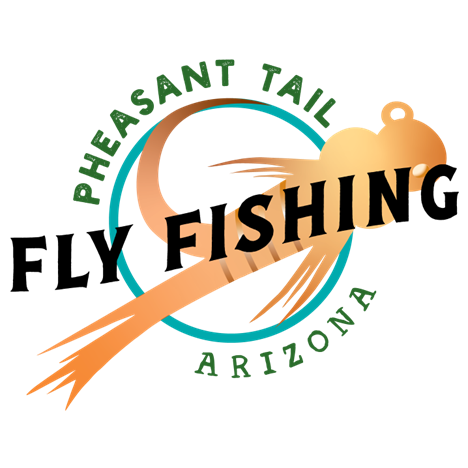The following article is taken from Colter Backcountry's blog. Colter Backcountry makes premium gear for backcountry anglers.
At the end of the day, only one thing will actually make you a better backcountry angler: lacing up your boots and venturing into the woods. But, focusing your efforts on building a few specific skills before and during your next backcountry trip will get you there faster. Here are a few tips to become a better backcountry angler.
Get Off Grid
When I first started backpacking, it never crossed my mind that you could travel off-trail. Now, I like to incorporate off-trail travel into nearly all of my trips. Why? Because it’s the best way to access remote lands and drainages. For many people (my former self included), leaving the bounds of an established trail system can be intimidating, especially if the terrain is rough. Start by practicing in small pieces. Explore a ridgeline within sight of camp or climb a nearby summit. You’ll find that you quickly become more adept at moving through terrain without the aid of a trail.
Even if you don’t plan to leave an established trail system, off-trail travel is still an essential skill because many trails on public land are poorly maintained. On many occasions I’ve slowly crawled my way up an overgrown drainage that was clearly marked as a trail (albeit one that hadn’t been cleared or maintained in many years).
Many great drainages are flanked by solid trail systems. Many more are not. The better you are at getting off-trail, the more pristine water you can access.
Become a Map Master
While it’s fun to play 19th century Mountain Man and bushwhack your way through remote drainages, remember that it is 2023 and virtually all of our fishing waters are digitally mapped in detail. Understanding how to interpret a topological map is an invaluable skill that will cut out loads of frustration once you’re actually on the ground.
Practice reading contour lines and understanding steep terrain. If you’re worried about your ability to translate the lines on a map into a visual image of the landscape, practice with an area you know well. Imagine what it would look like on a topo map and then check how it compares to the contour lines on the real map. When planning a backcountry trip, I am constantly asking I wonder if I can get there? Or How could we access that piece of water? Thoroughly understanding a topo map will help you answer these questions and find the best overland routes to your fishing spot.
While nothing will beat a classic National Geographic laminated fold-up, modern apps are an easy tool that you’re probably already carrying in your pocket. OnX and Gaia are both great options. Apps give you the added ability to do some e-scouting ahead of time in a variety of areas across your region.
One bit of warning: topological maps will show terrain features, but they won’t identify the specific landscape. What looks like a pleasant meadow on a map could be a miserable marsh. What seems like a nice wide river bank could be choked with thorny locust trees. Using satellite imagery (another upside to digital apps) can help you understand the plant life a bit better, but the only way to really understand what’s out there is to get out there yourself.
When you’re fishing the backcountry, there will always be unexpected surprises. That’s part of the thrill of backcountry travel! But, understanding the topography or a region can help you dial in your planning. When you’re well prepared, surprises will seem like exciting challenges. When you’re underprepared, they can ruin a trip.
Get Fit
It’s all fun and games watching backcountry trail videos, scouring topo maps and consulting gear lists. Then you arrive at the trailhead and throw on your pack. Oof. You might have the perfect plan, but without physical preparedness well, the trip is going to suck.
Luckily, the best way to get fit outside is to do fun things outside. Instead of locking yourself into a gym every day, throw a pack on and spend a few hours outside a few times each week. While weight lifting is an invaluable tool for building strength and avoiding injuries, it definitely does not replace training outside with a backpack. Venture out in gnarly weather to really prepare. The best backcountry travelers are simple comfortable being uncomfortable.
When the going gets tough, remember that this generally holds true: the further you can hike, the better fishing you’ll find.
Focus On One Thing
When fishing on a backpacking trip, the primary goal of each day should be to hike OR to fish, not both. If your planned itinerary has you hiking a ton and fishing a ton in one day, you’ll probably do both pretty poorly and go to bed tired and frustrated.
When I first starting combining backpacking and fishing trips, I would get this wrong all the time. I’ve since found that alternating between hiking days and fishing days is a good way to run a trip. Often times, I’ll spend the first day primarily hiking, set up a base camp, and then spend the next few days fishing water from my base camp. This method also works well because you’ll likely get a good lay of the land during your long hike on day one, and can bookmark good spots to return to later in the trip.
Above all, remember this: while it might require a bit of know-how and common sense, backcountry travel is nothing more than walking, eating, and sleeping. These are activities every human does every day. In this case, you’re just doing them outside. Take safety precautions seriously, but don’t let preconceived notions intimidate you. Epic backcountry fishing is out there, you just have to go get it.

